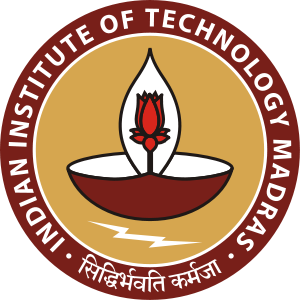Team:IIT Madras
From 2013.igem.org
Indian Institute of Technology Madras
Indian Institute of Technology Madras
iGEM 2013
|
iGEM and IIT Madras
IIT Madras has had a very successful history at previous iGEM competitions. We started participating in 2008 and in our very first iGEM, the team managed to secure a silver medal with two prestigious awards for ‘Best Foundational Advance’ and ‘Best New BioBrick Part or Device, Engineered.’ We backed our highly promising debut at the competition with another silver medal at iGEM 2009. The 2010 competition saw us rise to the zenith of our capabilities and the team managed to bag IITM’s first gold medal at iGEM. The legacy continued in iGEM 2011 as IITM received a ‘Safety Commendation’ and the award for the ‘Best New BioBrick Part, Natural’ in the Regional Jamboree and ultimately, another gold medal at the World Championship held annually at MIT, USA. Undergraduate students from the Department of Biotechnology (IITM), year after year, have shown that they have the quality and the enthusiasm to compete and succeed at the highest level and we really wish to continue the legacy of our institution this year as well. |
|
About the Project
IIT Madras has had a very successful history at previous iGEM competitions. Shiga toxin is a deadly toxin secreted by Shigella dysenteriae and other shigatoxigenic bacteria. These bacteria inhabit the gastro-intestinal (GI) tract of cattle and produce a biofilm on the walls of the tract which is essential for the secretion of the toxin. According to statistics, more than 1 million people have been killed by the lethal toxin and many more have been infected. There is no established cure for this harmful toxin till date and this motivated us to come up with a feasible solution to this global problem using synthetic biology. Our idea mainly focuses on: Inhibiting biofilm production. Neutralizing the already produced toxin. For the first part, we have identified a compound, indole-3-acetaldehyde (I3A), which is a potent biofilm inhibitor. We plan to express the compound by engineering the I3A-producing genes into our host system (E.coli). For the second part, we have identified a nine amino-acid peptide (Gb3 mimic) which has anti-Shiga toxin activity. To ensure the effective translocation of the peptide outside the cell, we plan to clone the Gb3 mimic downstream of an outer membrane signal peptide (ompF). The production of the Gb3 mimic will be confirmed by gel electrophoresis followed by mass spectrometry or reverse HPLC. |
 |
 |
 |
 "
"

